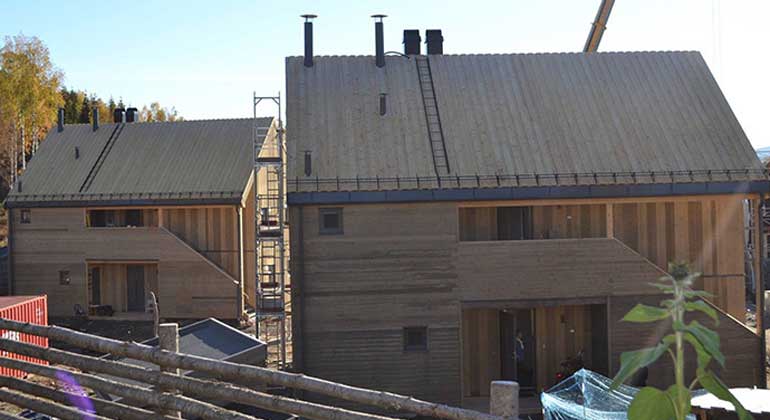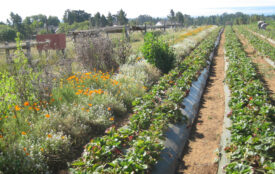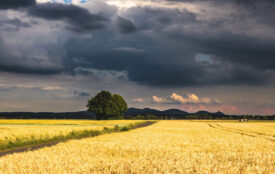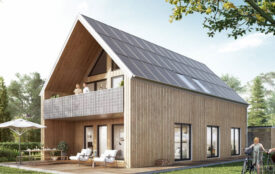A Village for the Future
The inhabitants of a Norwegian ecovillage have found community in environmentally friendly technologies and collaborative consumption.
On this day in mid-April, spring is in the air in Oslo, while winter is just now loosening its grip on the lake-pocked, wooded regions roughly 100 kilometers to the north of the capital. Idyllic Hurdal Økogrend is located just a few miles from downtown Hurdal above the lake by the same name. Of the 175 homes there, 44 have been occupied so far. The new construction site still looks a little barren, even if it is immediately obvious that this is not a typical residential development. The modular prefab homes, called active houses, were designed specifically for this eco-village. They feature non-processed natural wood panels, the south side of each roof is covered with photovoltaic panels, and many houses have winter gardens.
Beside the crackling fire in the soapstone oven, 61-year-old Ingvild Forbord serves waffles and fair-trade coffee. She and her husband Patrik purchased house #3 on newly built ‘Elf Way’ in July of 2013. The interior walls of the house are covered with wood panels, as well. Non-toxic colors and porous materials create a healthy indoor climate. “Thanks to the photovoltaic system, we are all but independent of the public power grid,” Ingvild explains. In the summer, any electricity surplus is fed into the community network; during the daylight-starved winter months, the eco-villagers supplement their heating systems with locally-felled firewood.
Home life, work and play merge
“Actually, I’ve been wanting to live in an alternative community since my university years. Back then I dreamt more about living in a community in which everybody shared everything with everyone,” says Ingvild laughingly. “I never really gave up on that dream. Today, however, I am grateful that we were able to purchase a move-in ready eco-house and that we can freely alternate back and forth between communal activities and our private sphere.” For their active house in the eco-village, Ingvild and Patrik gave up their townhouse and accompanying neighborhood near Oslo. “Eco-village may sound like hippy idealism, but that has very little to do with our actual life here. What was important to us was the combination of a good neighborhood and a sustainable and ecological lifestyle,” explains Ingvild, who also gave up a permanent teaching position to move to Hurdal. Mankind is currently using the resources of one and a half planets. That is why she thinks it is so important to develop alternatives to our prevailing consumer society.
“For example, in our village, everyone does not need to buy their own drill; and many tasks get done with the help of neighbors,” Ingvild explains. “A few months ago we established a car-sharing pool made up of three electric vehicles. What’s more, we try to supply ourselves with food locally.” Ingvild pulls out her cell phone and shows us an app that she and others from the Global Ecovillage Network developed. The app is designed to make exchanging and sharing within the community even easier. Residents can send out invitations to clothes-swap parties, announce that there are four pounds of self-picked plums left over and up for grabs, or search a rideshare opportunity for the weekend.
One of the basic ideas of such eco-villages is to combine home life, work, and play so that life is self-sufficient and less dependent on cars. Not every resident of Hurdal has quite reached this goal yet. Although Ingvild quickly managed to find a job at the communal school teaching children of asylum seekers, her husband Patrik still has a three-hour round-trip commute by bus and train to and from Oslo. “That is less than ideal,” Ingvild admits. Yet she is optimistic, because the community administration has promised a direct bus line connecting the village to Oslo. Aside from that, she is counting on many new jobs being created in and around the eco-village within the next few years.
Neighborhoods become communities
Next door, the former elementary school building has morphed into an eco-friendly commerce center, with rooms for shared offices, classes and seminars, as well as an organic grocery store. The newly-opened Café Herb Garden, complete with its own bakery, has quickly become the hub of life in the eco-village. “Nobody ever misses the community lunch buffet offered every Thursday,” Ingvild says. “Here we exchange experiences, initiate work groups and tend to the community spirit.” With so many different people with all their various dreams and ideals, it is important to get to know each other and slowly grow into a cohesive community. Although not everything has gone smoothly in the early phases, life in the ecovillage has not lost its luster for Ingvild – on the contrary. “Life in such a community cannot simply be purchased along with the house. It is more of a process to which each member contributes their unique abilities, and I find it incredibly exciting to be able to help shape this development from the outset.”
Ecovillage on Lake Hurdal – A chronology
1997
Several young families come together with the goal of founding an ecologically and largely self-sufficient residential community.
2001
The small community of Hurdal offers to lease their former rectory and the accompanying properties to the group. The building cooperative Hurdalsjøen Økologiske Landsby SA is founded. The first houses made of wood and straw bale are constructed by members of the group.
2009
In collaboration with an architectural firm, modular pre-fab homes are developed for the eco-village. These ‘active houses’ have high standards in terms of eco-friendly materials, healthy indoor climate, and use of renewable energy. The coop decides to sell the houses on the open market in order to achieve financial viability and a more heterogeneous living community.
2013
Construction begins for the first 45 units, with living space varying from 28 to 160 square meters. A tota
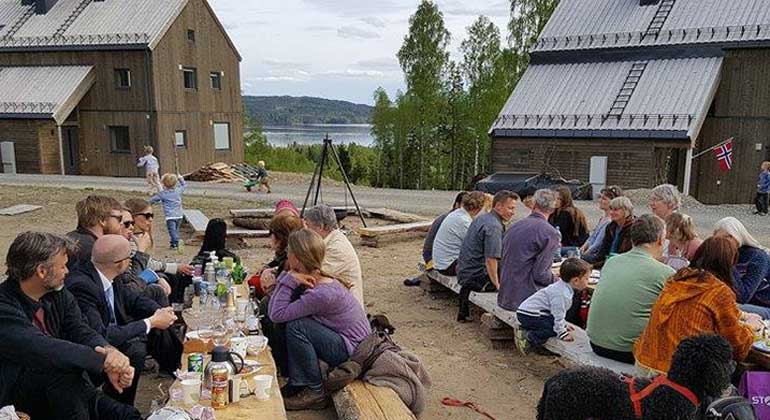
Source
FUTUREPERFECT-Plattform | Nicole Schalin 2017 | Translated by Kertin Trimle | Pictures: Ingvild Forbord (CC BY-SA)
